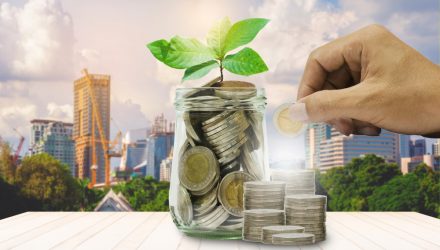When it comes to environmental, social and governance (ESG) ETFs, such as the FlexShares STOXX US ESG Impact Index Fund (CBOE: ESG) and the FlexShares STOXX Global ESG Impact Index Fund (CBOE: ESGG), investors need to assess the long-term implications of sustainable investing.
To date, investors tapping broad market funds have been mostly insulated from ESG offenders because those offenses have been company-specific, but that could change over time.
“Climate change and evolving social expectations are difficult to fully diversify away, and their impact will likely grow over time,” said Morningstar analyst Alex Bryan in a recent note. “While these changes could directly increase the cost of doing business, their impact could also be felt indirectly as regulations tighten and consumer preferences shift.”
Long-Term Benefits
ESG seeks investment results that correspond generally to the price and yield performance, before fees and expenses, of the STOXX® USA ESG Impact Index. The underlying index is designed to reflect the performance of a selection of companies that, in aggregate, possess greater exposure to ESG characteristics relative to the STOXX® USA 900 Index, a float-adjusted market-capitalization weighted index of U.S.- incorporated companies. Under normal circumstances, the fund will invest at least 80% of its total assets in the securities of the underlying index.
“Historically, there hasn’t been a clear link drawn between firms’ ESG characteristics and performance,” writes Bryan. “So, enhancing returns shouldn’t be the primary motivator for ESG investing. However, that also means that an ESG mandate doesn’t necessarily hurt returns. ESG investing can be an effective way for investors to align their portfolios with their values. But ESG isn’t just about values, it’s about long-term risk management that affects all investors.”
While ESG funds are strutting their stuff this year, historical data show there isn’t a strong correlation between high ESG scores and equity performance, but that too could change with time, underscoring the long-term potential of ESG and ESGG.
“If stocks share common ESG risks and the market does not fully appreciate them yet, firms with lower ESG risks could be undervalued and priced to offer market-beating returns,” according to Bryan. “That mispricing would allow investors to derisk and increase expected returns, so it probably wouldn’t last. If the market increasingly recognizes ESG risks as systemic, it should assign higher prices and lower expected returns to companies with lower ESG risk. The transition to that new equilibrium could push the price of ESG leaders up, helping their short-term performance at the expense of future expected returns.”
For more on multi-asset strategies, please visit our Multi-Asset Channel.
The opinions and forecasts expressed herein are solely those of Tom Lydon, and may not actually come to pass. Information on this site should not be used or construed as an offer to sell, a solicitation of an offer to buy, or a recommendation for any product.

